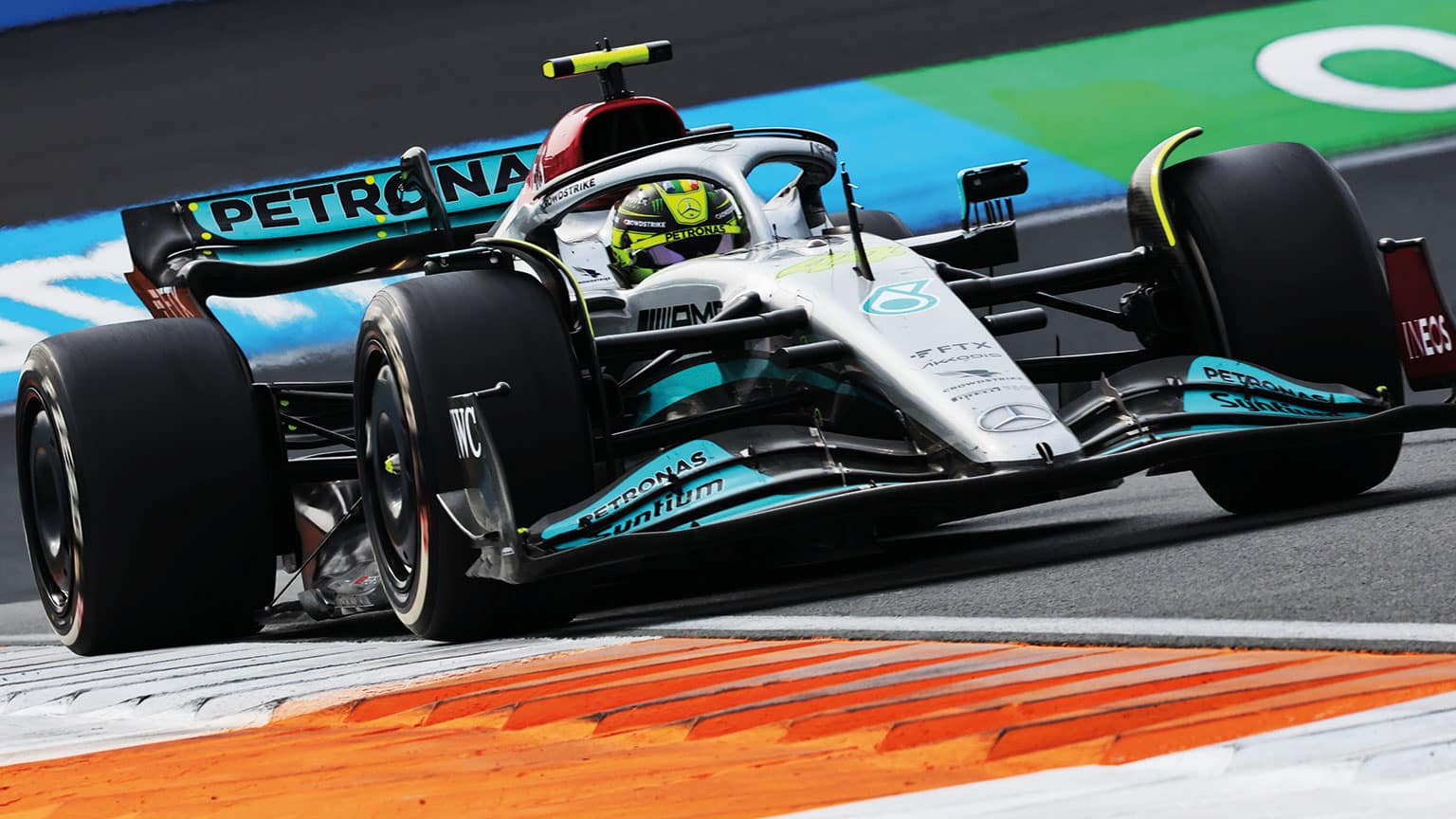Did Mercedes surprise Red Bull with hard tyre tactic?
Mercedes was closer than it has been all season in Zandvoort, helped on by a slick strategy on the unloved hard-compound tyres. Mark Hughes explains what Red Bull might have missed

Mercedes made the hard Pirellis work better than Red Bull in the Netherlands
Steve Etherington/Mercedes-AMG
It’s relatively easy to have great strategy with the fastest car. But when scratching for pace, somewhere close but not quite there, sometimes circumstances can favour you, allowing you to give the faster guy a fright. Mercedes was in such a situation at Zandvoort.
The W13 is a tricky car but Mercedes at least now broadly understands it. Its limitations are baked-in but it has strengths. On a high-downforce track where the cars can be run with a low ride height, it is pretty quick. Add that to its usual kindness on the rubber and it was somewhere close in Zandvoort, closer than it’s been all season. When Mercedes saw that this, combined with a bit of ambiguity in what the ideal strategy was set to be – one-stop or two, medium tyres or hard – it got quite excited. There was a potential window here to steal a win against the run of play, to maybe, just maybe, be in contention for a victory.
The key, the random set of circumstances which offered Mercedes that window, was the hard C1 tyre and the gripless state of the track on Friday. Red Bull had tried the hard early on Friday and had rejected it. Too slow, it reckoned. It may have been hastened in this decision by having lost running time with Max Verstappen because of a PU/transmission problem, and thereby having only the car of Sergio Pérez data gathering. Mercedes stuck with it for longer with both cars – and liked it. The track improved a lot after Red Bull abandoned the hard and that may have further confused the issue. By the time it ran the mediums and softs, grip had increased, so possibly exaggerated the difference to the hards. Pirelli believed this to be down to the fine layer of sand that tends to cover the track when it hasn’t been used. Once dispersed, it brings a big improvement. But it may not have been a Red Bull miscalculation.
If you didn’t want to run the hards, there was no option but a two-stop
It may be that the hard genuinely did not work as well on the RB18 as on the Mercedes. That was Verstappen’s belief: “The C1 and C2 are very stiff tyres,” he commented, “and they just didn’t seem to really switch on for us as good as they did for [Mercedes].” If you didn’t want to run the hards, realistically there was no way of doing a one-stop race here. So Red Bull, along with most other teams, was committing to a two-stop by dismissing them. Only Mercedes and Alpine were basing their strategies around a long stint on the hards, albeit for different reasons. A pitstop at Zandvoort will cost around 20.5sec.
By Red Bull’s numbers, running shorter stints on the softs and mediums would buy you more than the 20.5sec of an extra stop. But not for Mercedes – because the W13 was quite happy on the hard and the medium. As soon as the blankets came off everyone’s tyres, with the Red Bulls and the Ferraris on softs and the two Mercedes on mediums, the likely divergence in stop numbers became clear. Verstappen, Charles Leclerc and Carlos Sainz had all made their first stops by lap 18. This left Lewis Hamilton and George Russell 1-2 and still with many laps to go on their mediums. They were targeting getting to around lap 30 of the 71-lap race and then switching to the hards.
Verstappen had just about caught them back up as the Mercs were brought in (on laps 29 and 31). Their pace as they rejoined on the hards was better than Verstappen could do on his older mediums and within two laps Hamilton had got himself to less than a pitstop-worth of gap behind Verstappen and was steadily reducing it. Russell was less than a pitstop behind 11 laps into his stint.
Red Bull was planning on keeping Verstappen out until 20 laps from the end, so as to get him onto a set of softs. Meanwhile Hamilton and Russell – with no more stops to make – steadily closed the gap. Which meant that, after his second stop, Verstappen was going to exit around 5sec behind Russell and 8sec behind Hamilton. Although a safety car meant we didn’t get to see this play out, it’s a near-certainty that Verstappen on new softs would have been sufficiently quicker than the Mercs to have passed before the end, especially as the Red Bull’s straight-line speed was strong.
But the fact that Mercedes was set to have made Verstappen work so hard in the late stages despite its car not being quite as quick as the Red Bull suggested Mercedes had got its strategy absolutely right. Which doesn’t mean Red Bull had got it wrong.
